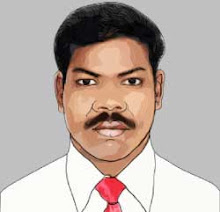Nothing is more mercy, even though the Indian institutions like Delhi School of Economics, IEG and ISEC were established by one man who was more like politicians than to say economist!
VKRV: A politician-economist
T C A Srinivasa-raghavan /
It has been my lament for long that Indians in public life seldom write their autobiographies. History is poorer for their reticence. But of late I have come round to the view that this reticence could largely be on account of complicity, if not in wrong-doing, then at least in monumental goof-ups. After all, those who live in glass houses don’t throw stones. Of course, the market is very small, too.
This volume, like some others before it, is a halfway-house solution. It consists of essays by persons who knew Dr V K R V Rao. Arguably, he was one of the best economists
If public memory is short, economists’ memory can be even shorter — witness the way they keep saying things which have been said before. This fact comes home with brutal clarity when you read the late P R Brahmananda’s contribution to this book. It reminds us about Dr Rao’s theoretical contributions to macroeconomics, which, while not being several, were nevertheless bang-on. Also, it is utterly frightening to see that, structurally, we have not progressed at all since 1952! Here’s how Dr Brahmananda sums up Dr Rao’s insights:
“Dr. Rao in his paper on investment, income and multiplier identified the following, some overlapping, features of an underdeveloped economy: (1) prevalence of disguised unemployment; (2) dominance of production under household enterprises; (3) a significant extent of production for self-consumption; (4) predominance of agriculture; (5) deficiency of technical knowledge; (6) deficiency of capital equipment; (7) a marginal propensity to consume equal to, or about-unity; (8) a high proportion of incremental demand towards food in any incremental income-generation” (p. 221).
Volumes such as this one, containing contributions by different people, also sometimes bring new things to light. Not many know that the MIT Centre, with which the Perspective Planning Division of the Planning Commission collaborated, had a CIA link. Dr K S Krishnaswamy, former Deputy Governor of the RBI, has this to say:
“Before he (VKRV Rao) resigned from the Planning Commission in 1966, two events led to some serious disagreement between us. The first was linked with Pitambar’s (Pant) and my division’s close relations with the Massachusetts Institute of Technology Centre, which had brought in several talented economists interested in
It is also interesting to learn from the essay by V R Panchmukhi that very little has changed at the Delhi School of Economics between then (1950s) and now. This is what he says:
“In those days, the Delhi School of Economics had the bad reputation that the research students of the DSE took about 8-10 years to complete their Ph.D. work and in fact that there were no Ph.D. degrees awarded for more than 10 years in the past. There was also the notoriety that the Ph.D. guides, including Dr. V.K.R.V Rao, as a guide, never met their students for several months, sometimes, for six or eight months. Professor K. N. Raj had once asked me to work hard on my own and dispel this ‘reputation’” (p. 192).
In the end, you have to ask: what did it all add up to? A great deal, as it happens. But given the sort of person he appears to have been, one cannot help wondering if he would have been entirely satisfied with the way in which his legacy has been carried on.
The ISEC remains most true to its original mission, with the IEG following close behind. But it would have probably upset him deeply to see the plight of the Delhi School of Economics today.
VKRV Rao
Passionate Humanitarian
Edited by S L Rao et al.
Academic Foundation
Pp 289; Rs 695
http://www.business-standard.com/india/storypage.php?autono=331721

No comments:
Post a Comment